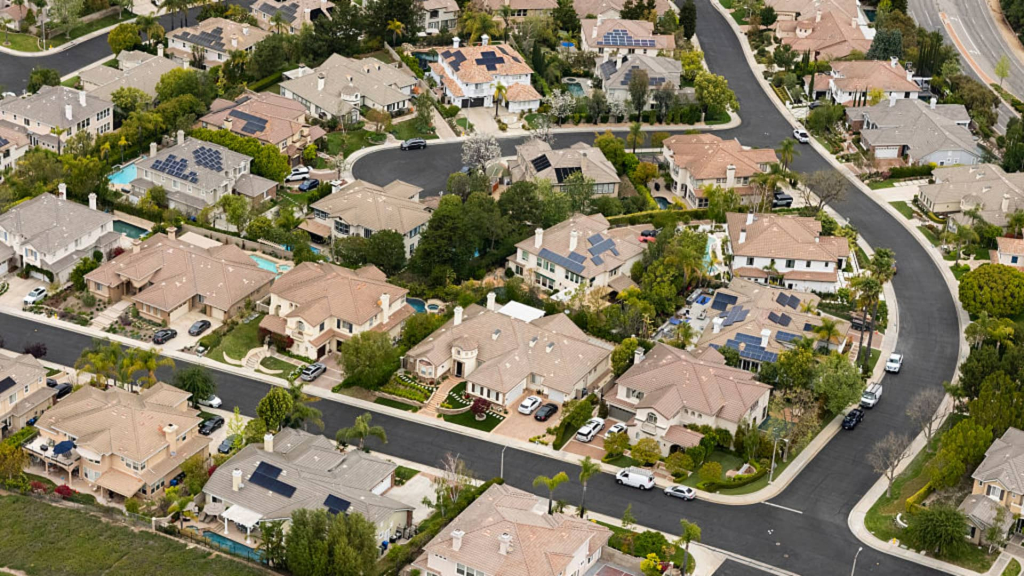The housing market, which saw a remarkable surge during the early pandemic years due to unprecedentedly low mortgage rates, is currently grappling with persistent challenges of low inventory and soaring prices.
According to the S&P CoreLogic Case-Shiller Index, property prices nationally in March surged to 39% above levels recorded in March 2019. While there are signs that the scarcity of homes is beginning to rectify, the relief is not being felt across all price points.
The demand for housing remains robust, particularly among lower- and middle-income buyers, a segment experiencing a severe shortage of available homes. Consequently, sales in affordable price ranges are lagging behind the performance of more expensive properties.
A recent analysis by the National Association of Realtors in conjunction with Realtor.com has delved into the intricacies of affordability and inventory, illuminating the key challenges affecting the market. Their methodology determined affordability under standard underwriting practices for a 30-year fixed mortgage, with an allowance for 30% of household income to cover monthly payments, including mortgage, taxes, and insurance.
For households earning between $75,000 and $100,000 annually, identified as middle- to upper-middle-income earners, the supply of affordable homes has seen the most significant growth of any income bracket this year. Data shows that in March 2024, 20.8% of home listings fell within reach for these buyers, edging closer to 21.2% in March 2023. However, this is a stark decline from March 2019, when they could afford nearly half (48.8%) of all active listings.
The report indicates that in a balanced market, this demographic should be able to afford 48% of all available properties. Achieving such balance would necessitate the addition of approximately 416,000 listings priced at or below $255,000, according to the findings.
Meanwhile, those earning below $75,000 annually are facing even tighter conditions in the housing market. A potential buyer earning $50,000 now is limited to affording just 8.7% of the housing stock as of March, a decline from 9.4% in March 2024 and down from 27.8% in March 2019.
On the flip side, higher-income households enjoy near-complete access to the market. Buyers with annual incomes of $250,000 or more can afford 80% or more of listings available.
“Homebuyers today have a greater selection of homes compared to last year, and positively, many have been added at moderate price points,” stated Danielle Hale, chief economist at Realtor.com. “However, the data reveals that affordable options for low- and moderate-income households remain inadequate.”
Hale further noted that the improvements in inventory are not evenly distributed nationwide, with notable gains concentrated primarily in the Midwest and South.
While this report offers a national overview, real estate nuances reveal that local markets vary widely. Cities in the Midwest, such as Akron, Ohio; St. Louis; and Pittsburgh, show a balanced market with sufficient supply to meet demand. Others, including Raleigh, North Carolina; Des Moines, Iowa; and Grand Rapids, Michigan, have made strides in adding affordable listings, but not enough to fully satisfy demand.
Conversely, over 40% of the largest 100 metropolitan markets in the nation are still experiencing significant struggles. Urban areas like Seattle and Washington, D.C., while seeing increases in affordable home supply, still require incomes exceeding $150,000 annually for households to afford half of the listings available.
Markets that once overheated have begun to cool, with cities like Austin, Texas; San Francisco; and Denver now boasting higher supplies of affordable homes that exceed pre-pandemic levels.
“This suggests that with a strategic mix of new construction, market adjustments, and targeted local policies, even historically challenging markets can shift towards a balanced state,” noted the report’s authors.
However, certain markets are deteriorating, particularly in Southern California, with Los Angeles and San Diego facing worsening conditions. New York City also features in this group, attributed to factors such as years of underbuilding, scarce land available for development, elevated construction expenses, restrictive zoning regulations, and rapid population influxes.
Although homebuilders are attempting to construct more affordable units, escalating costs, coupled with potential increases from tariffs and new immigration policies, pose significant challenges. Notably, single-family housing starts in March fell nearly 10% compared to the previous year.


























